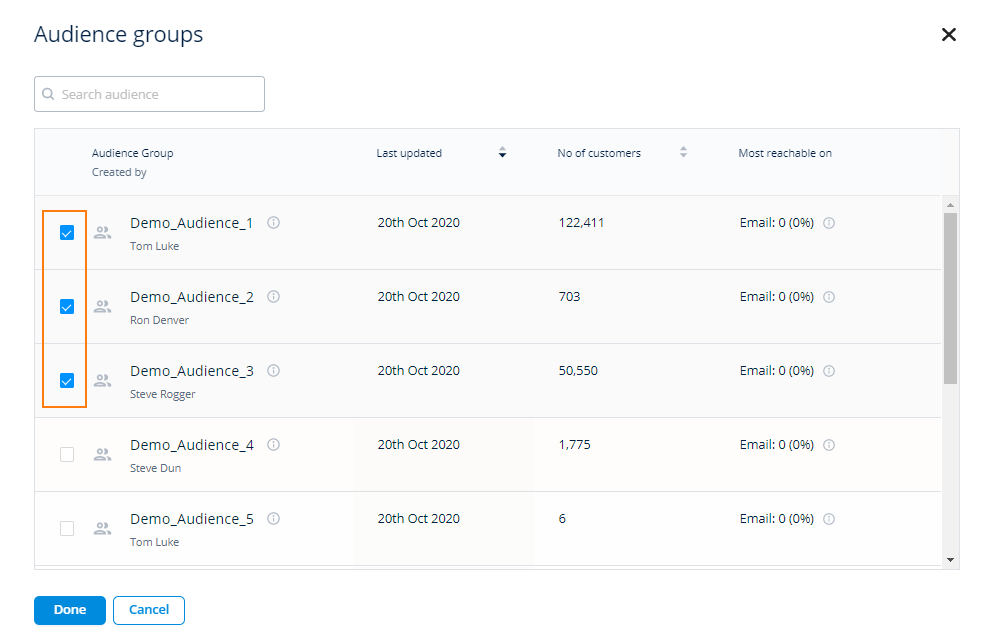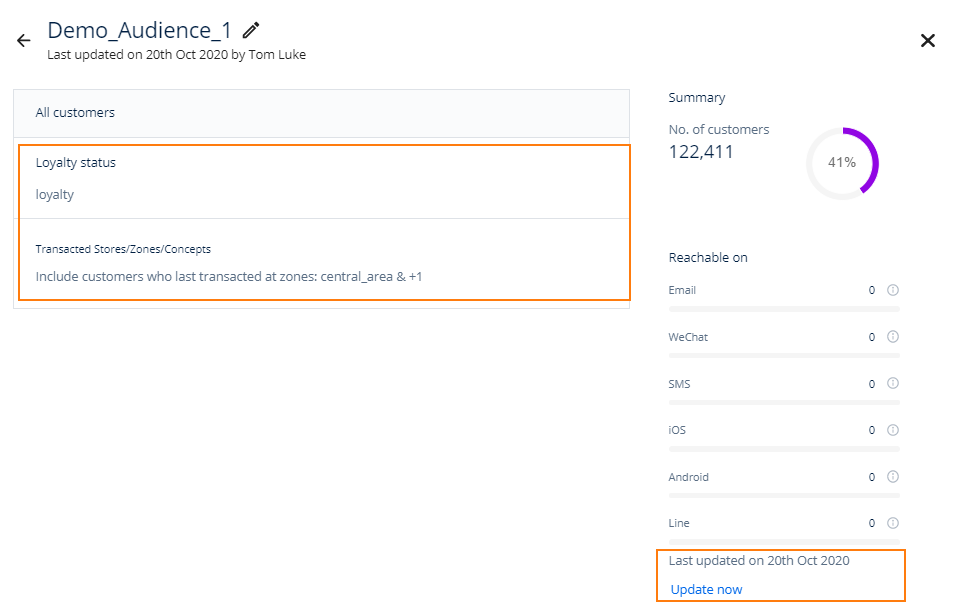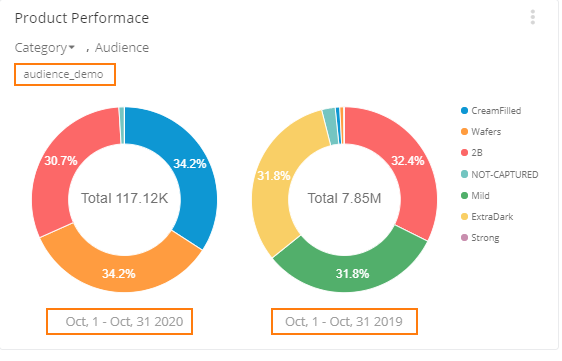Audience group filter in reports
Introduction
The audience group list helps filter the Insights+ reports based on customer demographics, campaigns, transactions, and other activities. There are multiple filter options in Audience Group - loyalty information, transactions, campaign and coupon, user profile, and more. You can also create an audience group filter and apply it to the report.
To know more about how to create and use an audience group, refer audience group creation in Engage+.
To start with this filter, you need to know the basic usage of Insights+ reports and audience group filters. You also need to create an audience group filter in Engage+; it is only available in the Compare Audience list in Insights+.
Applications of Audience Group Filter in Report
The following are the applications of the audience group filter in a report.
- Filter a report with specific audience-related information. All audience groups, including uploaded, combined, and filter-based groups, can be used as filters in reporting.
- Generate a report with customers’ behavior to enhance sales and brand value.
- Predict customers’ activities by implementing different audience group filters that use the AI stack of Capillary (AIRA).
- Decide the target audience based on their time, product, and store selection.
- Generate effective offers based on audience activity towards a specific brand or product.
Applying an Audience Group Filter in a Report
To apply an audience group filter in a report, follow these steps.
- On the EI navigation pane, click All Reports.
- In All Reports, search and select the report by name or filter the report list by All Reports, Favorite Reports, Created by Me, or Standard Reports. You can also create and select a custom report.
- In the Report, click Compare Audiences to see the list of audience groups.

- In the Audience Group list, search and select the audience group by name.

- In a report, you can apply up to three audience groups filter.
- To review the applied filters, click on the Audience group name. To see a brief description of each audience group list, hover on the info icon (besides the audience group name).

- To see the latest data of an audience group, open the audience group, and click the Update Now link.
- Click Done to apply changes.

To create audience filters using the data from extended fields, please contact the Insights Sustenance and Data Science team.
Use Cases
The following are the use cases that help you understand the feature.
- Scenario 1: Consider a scenario where an organization wants to compare the purchasing patterns (based on products purchased) year-over-year(YoY) of a high-value customer group.
Solution: This like-for-like(LFL) analysis can be accomplished using audience group filters. Open a sales report and select an audience group filter from the compare audience list that has the Transaction date and time filter applied to it. Now, you can see the product performance(based on product category) for an audience group(audience_demo) between a specific time duration(October 2019 and October 2020).
If you do not have the audience group in the list, you can create an audience group filter from Engage+ with the Transaction date and time.

- Scenario 2: Consider a use case where an organization wants to re-target an audience list with a minimum spend offer.
Solution: To decide the appropriate minimum spend threshold for the offer, open or create a report with an average transaction value-based banding of customers. Select the audience list to see the distribution of customers with various bands to decide the minimum spend. Now, you can see the shopping done by customers during a campaign(New Year Campaign) with value-based banding (<5000, 5000-7000, 7000-9000, and 9000).
If you don’t have the audience group in the list, you can create an audience group filter from Engage+.

Updated 6 months ago
